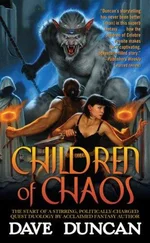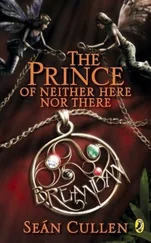He settled on a compromise. The transcripts would be sealed at the national archives for twenty years. The truth would come out in 2027, twenty-eight years after the massacre.
____
Though he was retired, Fuselier hoped to see the depositions, too. Optimally, he would like to question the parents himself. He knew where the boys ended, psychologically, but their origins were a mystery, particularly Eric’s. Only two people had an eighteen-year perspective on his path to psychopathy. When did Eric start exhibiting the early hallmarks, and how were they visible? Wayne had adopted a stern parenting style—how had that worked? Eric wrote little about interaction with his mother—what had Kathy’s approach been? Were there any successes? Anything that could help the next parent?
Fuselier understood their refusal to talk.
“I have the utmost sympathy for the Harris and Klebold parents,” he said. “They have been vilified without information. No one has sufficient objective information to draw any conclusions.”
Fuselier said he had raised two sons, and either one could have emerged with traits beyond his comprehension. Eric documented his parents’ frustration with his behavior, as well as their attempts to force him to conform. Their tactics might have been all wrong for a budding young psychopath, but how do parents even know what that is?
“I believe they have been unjustifiably criticized for what their sons did,” Fuselier said. “They are probably asking themselves the same questions that we in the profession are asking.”
____
Patrick Ireland left home for Colorado State in fall 2000. He did fine. He really took to campus life. And he was surprised by how much he enjoyed business school. Letting go of architecture turned out to be easy. He had been forced into something he liked more.
He still fought memory battles, struggled a bit to find words, and would probably remain on antiseizure medication for life. He met a girl his first night. Kacie Lancaster. She was clever, attractive, and a little shy. They clicked immediately and became close friends.
In May 2004, he graduated magna cum laude. Armed with a BS in business administration, he accepted a job as a financial planner at Northwestern Mutual Financial Network. He loved it.
One finger troubled him a little. His right pinkie jutted out away from the others, which caused a minor issue when he shook hands. It could poke the other person in the palm a little—just enough to signal that something was off. You could catch him glancing down there nervously, if you knew what to look for. It was not the first impression he wanted to make. But he had such a commanding presence once he spoke. Clients trusted him. His bosses were happy. He was becoming a star.
Patrick had retired the wheelchair and the crutch in high school. The foot brace remained. His right leg lagged behind a little: noticeable, but not debilitating. Running was out of the question, but water skis were not.
Balance, strength, and agility were all hurdles Patrick could overcome. But he would never regain the dexterity in his right foot to grip the ski. So he worked with an engineering friend to build a custom boot he could slip on as he tried to rise up on the water. They spent months working on prototypes and experimenting with them at the lake. John went with them for encouragement. Every time, the boat dragged Patrick uselessly behind.
They tried stripping the shell off a Rollerblade and adhering it to the ski. Nope. They refined it, and returned to the lake. Useless. Patrick tried over and over. He had made about ten runs that evening, and it was getting late. John was sure Patrick was exhausted, and thought it was time to break. No, I can do this, Patrick said.
John agreed. He sat in the passenger seat facing backward. The driver throttled the engine, and John watched his boy rise up onto the surface of the lake. Wow.
Patrick felt the spray pelt his face. The sun danced on the waves. The towrope jerked his arms. He dug in for a turn. A sheet of water shot up and sliced into his calf. It hurt, just a little. Ahhhhhh. The pain of competition. It felt great.
____
Everyone expected copycats. The country braced for a new level of horror. School shooting deaths actually dropped 25 percent over the next three years. But Eric and Dylan gave young eyes a fresh approach: terrorist tactics for personal aggrandizement. In 2001, a pair of ninth graders at a Fort Collins, Colorado, middle school procured a similar arsenal: TEC-9, shotgun, rifles, and propane bombs. They planned to reverse Eric’s chronology: seal off exits, mow down students, and save the bombs for stragglers. They would finish by taking ten hostages, holding them in the counseling office for fun, then killing the kids and themselves.
But they leaked. Kids nearly always leak. The bigger the plot, the wider the leakage. The Fort Collins pair went recruiting for gunmen to cover all the exits. One of the plotters told at least seven people that he planned to “redo Columbine.” He bragged to four girls that they would be the first to die. They went straight to the police.
Teen peers were different after 1999. “Jokes” scared the crap out of kids. Two more grandiose plots—in Malcolm, Nebraska, and Oaklyn, New Jersey—were foiled in the first five years.
School administrators around the country responded with “zero tolerance”—meaning every idle threat was treated like a cocked gun. That drove everyone crazy. Nearly all supposed killers turned out to be kids blowing off steam. It wasn’t working for anyone.
A pair of government how-to guides helped. The FBI and the Secret Service each published reports in the first three years, guiding faculty to identify serious threats. The central recommendations contradicted prevailing post-Columbine behavior. They said identifying outcasts as threats is not healthy. It demonizes innocent kids who are already struggling.
It is also unproductive. Oddballs are not the problem. They do not fit the profile. There is no profile.
All the recent school shooters shared exactly one trait: 100 percent male. (Since the study a few have been female.) Aside from personal experience, no other characteristic hit 50 percent, not even close. “There is no accurate or useful ‘profile’ of attackers,” the Secret Service said. Attackers came from all ethnic, economic, and social classes. The bulk came from solid two-parent homes. Most had no criminal record or history of violence.
The two biggest myths were that shooters were loners and that they “snapped.” A staggering 93 percent planned their attack in advance. “The path toward violence is an evolutionary one, with signposts along the way,” the FBI report said.
Cultural influences also appeared weak. Only a quarter were interested in violent movies, half that number in video games—probably below average for teen boys.
Most perps shared a crucial experience: 98 percent had suffered a loss or failure they perceived as serious—anything from getting fired to blowing a test or getting dumped. Of course, everyone suffers loss and failure, but for these kids, the trauma seemed to set anger in motion. This was certainly true in Columbine: Dylan viewed his entire life as failure, and Eric’s arrest accelerated his anger.
So what should adults look for? First and foremost, advance confessions: 81 percent of shooters had confided their intentions. More than half told at least two people. Most threats are idle, though; the key is specificity. Vague, implied, and implausible threats are low-risk. The danger skyrockets when threats are direct and specific, identify a motive, and indicate work performed to carry it out. Melodramatic outbursts do not increase the risk.
Читать дальше







